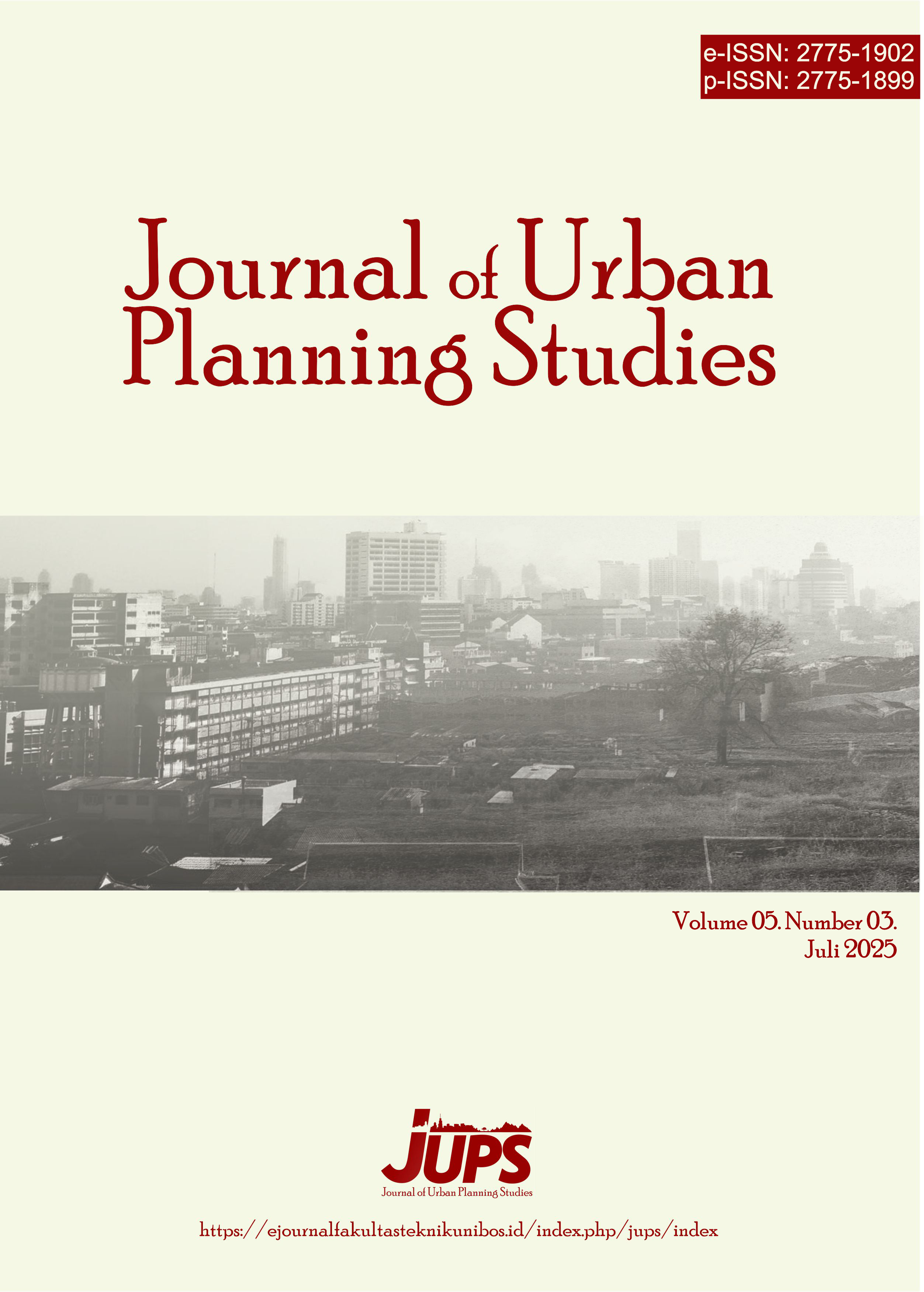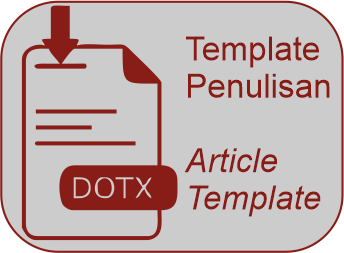Upaya Penataan Pedagang Kaki Lima di Jl. Kh. Ahmad Dahlan Kota Palopo
DOI:
https://doi.org/10.35965/jups.v5i3.688Kata Kunci:
Pedagang Kaki Lima, Upaya PenataanAbstrak
Abstract. This study aims to deepen the understanding of the study related to the efforts to organize street vendors so that it can be used as information and input material for the arrangement of street vendors on Jl. KH. Ahmad Dahlan, Palopo City. The sampling technique uses a purposive sampling technique where sampling is carried out according to criteria. The research methods used are qualitative descriptive and delphi analysis. The variables used are technology used, education level, business capital, labor, income, type of trader by nature, type of trader by trade, physical facilities of trade, selling location, public facilities, trading time, and distribution pattern.
Abstrak. Penelitian ini bertujuan untuk memperdalam pemahaman tentang kajian terkait upaya penataan pedagang kaki lima sehingga dapat dijadikan bahan informasi dan masukan bagi penataan pedagang kaki lima di Jl. KH. Ahmad Dahlan, Kota Palopo. Teknik pengambilan sampel menggunakan teknik purposive sampling di mana pengambilan sampel dilakukan menurut kriteria. Metode penelitian yang digunakan adalah deskriptif kualitatif dan analisis delphi. Adapun variabel yang digunakan adalah teknologi yang dipakai, tingkat pendidikan, modal usaha, tenaga kerja, pendapatan, jenis pedagang menurut sifat, jenis pedagang menurut dagangan, sarana fisik dagangan, lokasi berjualan, fasilitas umum, waktu berdagang, dan pola penyebaran.
Referensi
Abadie, A., Chowdhury, S., Mangla, S. K., & Malik, S. (2024). Impact of carbon offset perceptions on greenwashing: Revealing intentions and strategies through an experimental approach.Industrial Marketing Management. https://doi.org/10.1016/j.indmarman.2024.01.001
Abreha, K., & Robertson, R. (2023). Heterogeneous trade agreements and adverse implications of restrictive rules of origin: Evidence from apparel trade.The World Economy. https://doi.org/10.1111/twec.13486
Aditya, N. C., Natalia, T. W., Imaniar, L. N., & Astuti, S. (2020). Kampong KB Public Open Space Design Based on a Participatory. https://doi.org/10.1088/1757-899X/879/1/012160
Ahmad, A. L., Muhammad, A. K., Ali, N. E., Arip, M. S. M., & Azman, M. A. A. (2022). The Design of Spaces to Determine the Sustainability.International Journal of Academic Research in Business & Social Sciences. https://doi.org/10.6007/ijarbss/v12-i7/14310
Ahmadova, S., & Yamaçlı, R. (2022). The Importance of Participatory Planning in Housing Design: The Example of Baku.Sürdürülebilir Mühendislik Uygulamaları ve Teknolojik Gelişmeler Dergisi. https://doi.org/10.51764/smutgd.1058574
Barber, R. (2023).Urban planning. https://doi.org/10.4337/9781800377387.00017
Bekbolatova, M., Mayer, J., Ong, C. W., & Toma, M. (2024). Transformative Potential of AI in Healthcare: Definitions, Applications, and Navigating the Ethical Landscape and Public Perspectives.Healthcare. https://doi.org/10.3390/healthcare12020125
Bogomolov, Yu. G., Belyi, A. G., Mikeš, O., & Sobolevsky, S. (2023).Urban Zoning Using Intraday Mobile Phone-Based Commuter Patterns in the City of Brno. https://doi.org/10.1007/978-3-031-36808-0_35
Brinck, J., Leinonen, T., Lipponen, L., & Kallio-Tavin, M. (2020). Zones of participation - a framework to analyse design roles in early childhood education and care (ECEC).Codesign. https://doi.org/10.1080/15710882.2020.1812667
Buana, C., & Huda, N. (2023). Sarkasme dan ketidaksantunan berbahasa pada akronim ppkm di masa pandemi covid-19.Kajian Linguistik Dan Sastra. https://doi.org/10.23917/kls.v8i1.22300
Budovic, A. (2023). Urban restructuring and the location dynamics of P-KIBS in postsocialist Belgrade.Eurasian Geography and Economics. https://doi.org/10.1080/15387216.2023.2195415
Dana, I. W. G. K., Widiati, I. A. P., & Arthanaya, I. wayan. (2022). Eksistensi Lembaga Pemberdayaan Masyarakat (LPM) dalam Mewujudkan Pembangunan Desa di Desa Datah, Kecamatan Abang, Kabupaten Karangasem.Jurnal Preferensi Hukum. https://doi.org/10.55637/jph.3.2.4938.324-329
Darus, D., Ibrahim, A. B. bin, Dawi, A. H., & Selamat, A. Z. (2022). The Role of ‘Modul Pembinaan Karakter (MPK)’ in Building a Superior Personality in Trainees: a Case Study.Jurnal Ilmiah Peuradeun. https://doi.org/10.26811/peuradeun.v10i3.690
Dhakal, B. P., & Adhikari, K. (2022). Policy Problems and Progressive Solutions to Halt Increasing Social Harms on Disadvantaged Rural Communities from Current Neo-Colonial Land Grabbing Policy in Nepal: Insights and Opinions.Nepal Public Policy Review. https://doi.org/10.3126/nppr.v2i1.48686
Duchin, R., Gao, J., & Xu, Q. (2025). Sustainability or Greenwashing: Evidence from the Asset Market for Industrial Pollution.The Journal of Finance. https://doi.org/10.1111/jofi.13412
Girard, A., Arenella, K., Rider, G. N., Teoh, D., & Vogel, R. (2024). Gynecologic cancer survivor preferences for provider communication regarding sexual health after treatment: a qualitative study.Research Square. https://doi.org/10.21203/rs.3.rs-4048751/v1
Heinrich, A. J., Million, A., & Zimmermann, K. (2022). Spatial Knowledge and Urban Planning.Urban Planning. https://doi.org/10.17645/up.v7i3.6101
Hitch, G. J., Allen, R. J., & Baddeley, A. D. (2024). The multicomponent model of working memory fifty years on.Quarterly Journal of Experimental Psychology. https://doi.org/10.1177/17470218241290909
Kogetsidis, H. (2023). Dealing with complexity – the contribution of problem structuring methods to management science.The International Journal of Organizational Analysis. https://doi.org/10.1108/ijoa-01-2023-3562
Komar, O., Sadikin, A., Sulistiono, E., & Sukmana, C. (2023). Need-based training planning for PKBM managers in Cimahi City during the Covid-19 pandemic.Nucleation and Atmospheric Aerosols. https://doi.org/10.1063/5.0127604
Lehmann, S. (2020).The unplanned city: Public space and the spatial character of urban informality. https://doi.org/10.35241/EMERALDOPENRES.13580.1
Li, Y., Huang, Y., & Gong, D. (2023). Analyzing the impacts of logistics suburbanization on logistics service accessibility: Accessibility modeling approach for urban freight.Transport Policy. https://doi.org/10.1016/j.tranpol.2023.05.001
Lorato, T., Tadesse, T., Mamo, Y. A., & Getinet, B. (2023). The urban informal sector as a means of livelihood improvement among youth: Evidence from Hawassa city, Ethiopia.Cogent Economics & Finance. https://doi.org/10.1080/23322039.2023.2185346
Machado de Oliveira, J., Machado de Oliveira, J., da Costa, C. A., & Antunes, R. S. (2021). Data structuring of electronic health records: a systematic review.Health Technology. https://doi.org/10.1007/S12553-021-00607-W
Maslanov, E. V. (2023). Trading zones and boundary objects: To the typology.Вестник Санкт-Петербургского Университета. Философия и Конфликтология. https://doi.org/10.21638/spbu17.2023.113
Navarro-Yáñez, C. J., & Rodríguez-García, M. J. (2020). Urban policies as multi-level policy mixes. The comparative urban portfolio analysis to study the strategies of integral urban development initiatives.Cities. https://doi.org/10.1016/J.CITIES.2020.102716
Perera, M. K., & Coorey, S. B. A. (2022, December 2).Spatial configuration and neighbourhood characteristics’ impact on activities in informal spaces: a case study of Badulupitiya informal settlements in Badulla. https://doi.org/10.31705/faru.2022.19
Rohwerder, B., & Szyp, C. (2022).The Risks and Outcomes of Getting Help for Marginalised People: Navigating Access to Social Assistance in Crises.
Samsul, S., Peribadi, P., Arsyad, M., Tanzil, T. G., & Juhaepa, J. (2022). Tkpkd dan kemiskinan masyarakat pedesaan.Ethnoreflika : Jurnal Sosial Dan Budaya (e-Journal). https://doi.org/10.33772/etnoreflika.v11i2.1459
Sari, S. R., Darmawan, E., Murti, N. K., & Hilmy, M. F. (2023). Pengaruh keberadaan pkl terhadap pengguna jalan dan kualitas koridor jalan di semarang.Langkau Betang. https://doi.org/10.26418/lantang.v10i1.54358
Simanjuntak, B. H. (2023). Redesign Peningkatan Fungsi Mixed Use Area Jalan Jendral Soedirman Kota Salatiga melalui Re-desain Jalur Pedestrian.JAL (Jurnal Arsitektur Lansekap). https://doi.org/10.24843/jal.2023.v09.i01.p14
Slave, A.-R., Iojă, I.-C., Hossu, C. A., Grădinaru, S. R., Petrişor, A.-I., & Hersperger, A. M. (2023). Assessing public opinion using self-organizing maps. Lessons from urban planning in Romania.Landscape and Urban Planning. https://doi.org/10.1016/j.landurbplan.2022.104641
Soliman, A. M. (2021).The Paradigm of Urban Informality: Laws, Norms, and Practices. https://doi.org/10.1007/978-3-030-68988-9_4
Szetey, K., Moallemi, E. A., Ashton, E., Butcher, M., Sprunt, B., & Bryan, B. A. (2021). Participatory planning for local sustainability guided by the Sustainable Development Goals.Ecology and Society. https://doi.org/10.5751/ES-12566-260316
##submission.downloads##
Diterbitkan
Cara Mengutip
Terbitan
Bagian
Lisensi
Hak Cipta (c) 2025 Besse Widya Utami, Rudi Latief, Tri Budiharto

Artikel ini berlisensi Creative Commons Attribution 4.0 International License.













